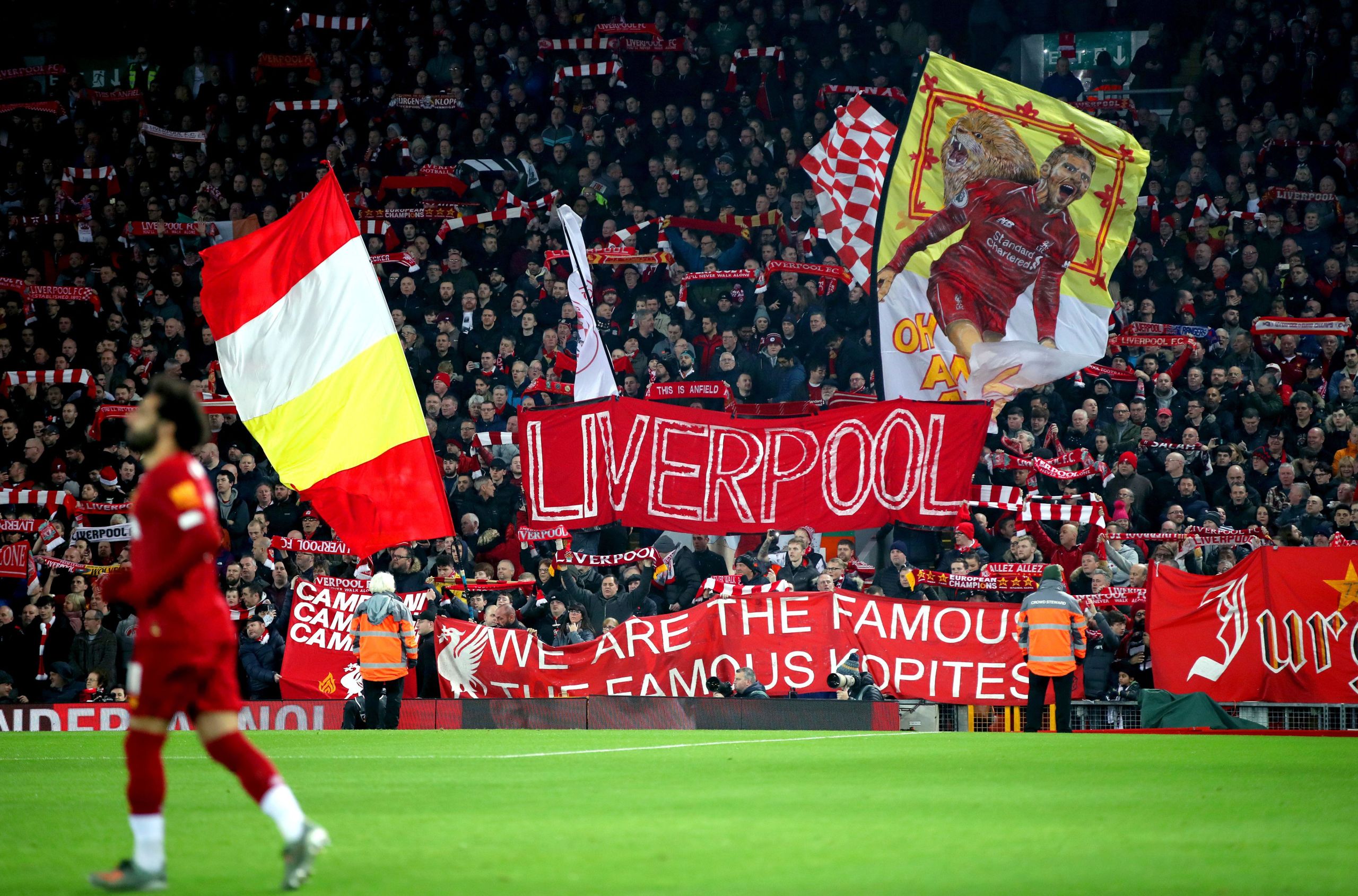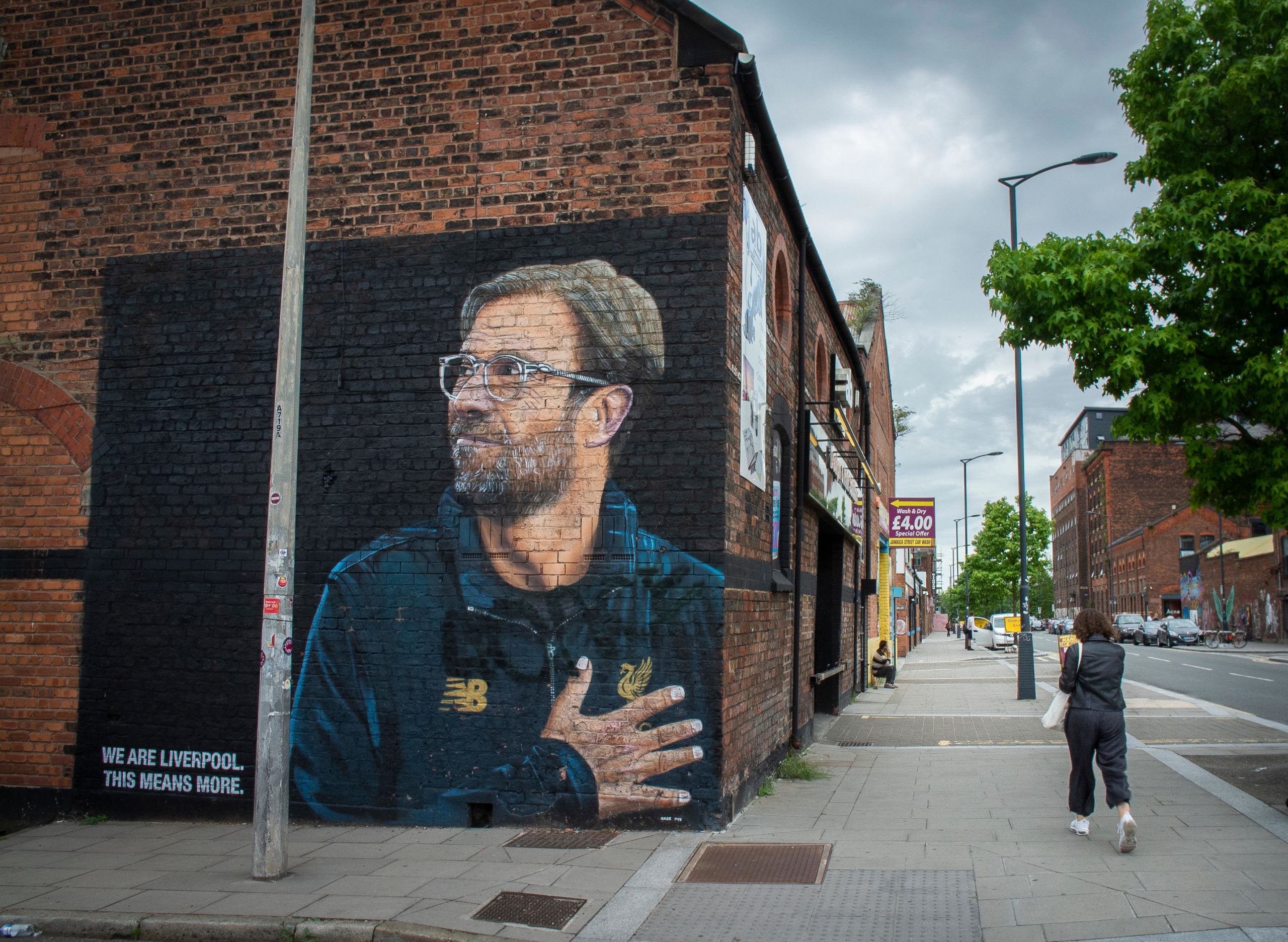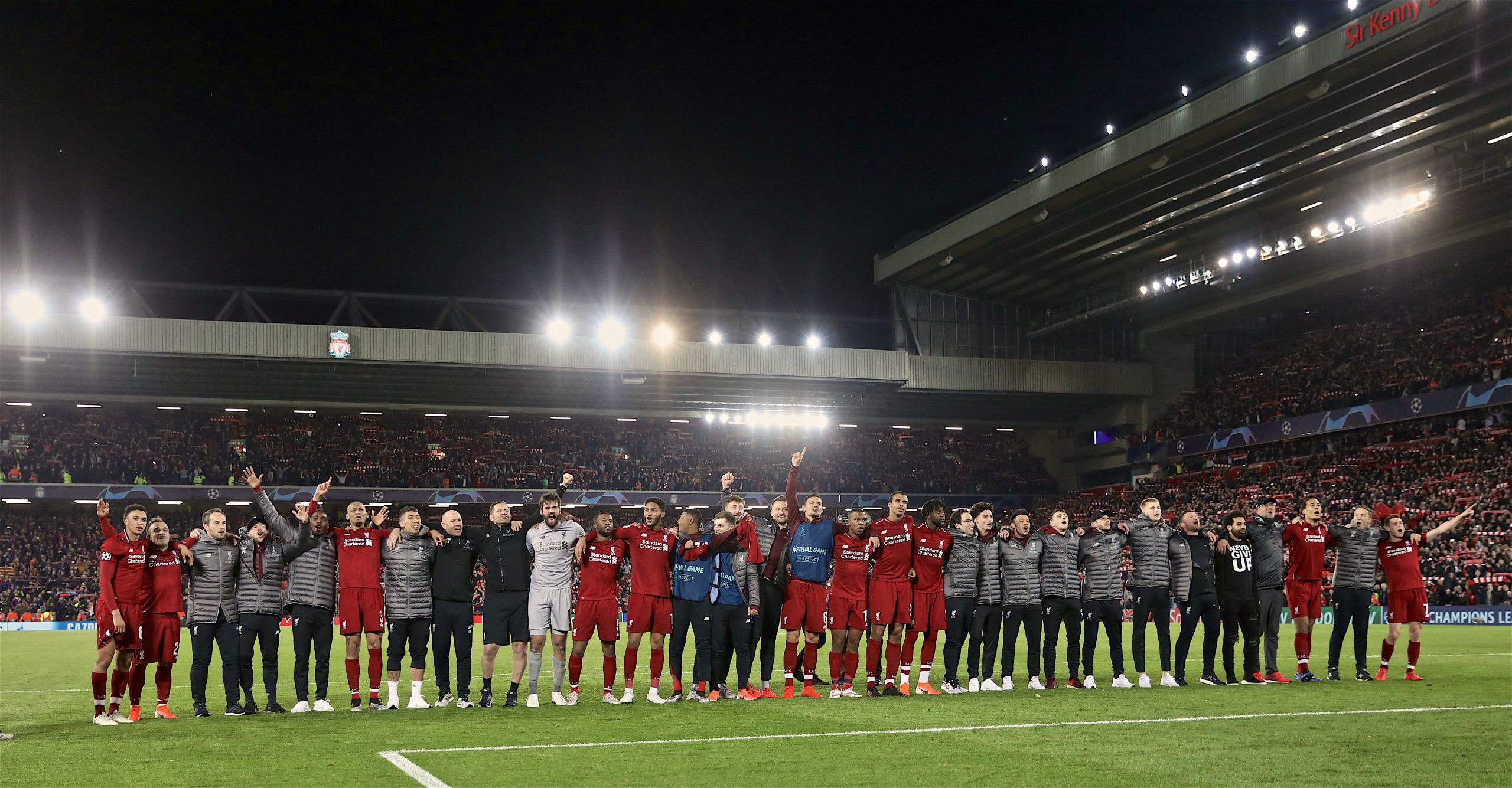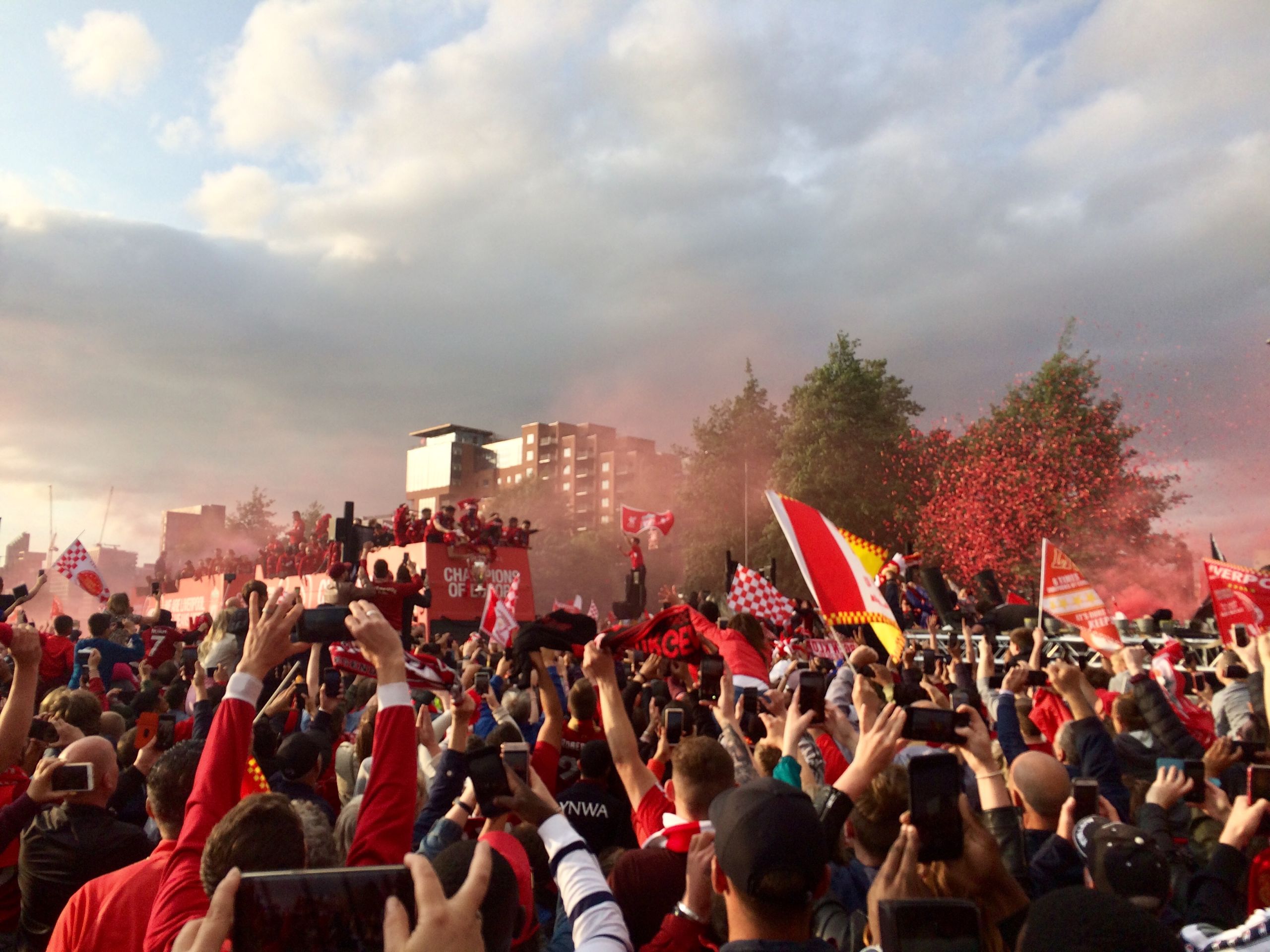Football Culture and socio-economics
Liverpool FC’s intriguing geographical, cultural and practical context


Credit: Craig Stennett / Alamy Stock Photo
Credit: Craig Stennett / Alamy Stock Photo

Credit: Xinhua / Alamy Stock Photo
Credit: Xinhua / Alamy Stock Photo

The 2019 Champions League victory parade
The 2019 Champions League victory parade
“It does have this sort of Goldilocks-style vibe, Liverpool. Where Liverpool is a relatively big city but it’s not absolutely huge.
“And one of the lines I’ve always said about Liverpool is that you know if there’s a match on.”
Neil Atkinson, CEO of The Anfield Wrap, offers this pleasant way to summarise the size, geography and logistical intricacies of the city.
“And that isn’t entirely true of Manchester, quite. It’s certainly not true of London,” he continues.
“The football club in Liverpool, if there is a game on, if there is a big European night, everyone knows it. You can’t look through the city without knowing it. It is absolutely everywhere. It impacts decisions on everyone. Even people who don’t like football.
“You can’t put a certain type of event on. Everything is in there. That isn’t the case in London.”
The football, evidently, ripples. In this case, it will ripple right across the city from either side of Stanley Park through shirts, scarves, songs, traffic – perhaps simply a knowing glance. This is football embedding itself, making itself the primary point of connection.
“The people who are putting the gigs on are going to the match, the people who run the art galleries are going the game. And it’s in part because of Liverpool’s size, it’s in part because of literally just the way Liverpool operates culturally,” Atkinson says.
So many parts of the world have intriguingly unique – sometimes, almost, intangible – social landscapes. Liverpool’s size and geographical position as a city – and, indeed, as a club – means it so often feels a fascinating example.
“I think there is something specifically 'Liverpudlian' and collective about the local support for the club,” says Professor John Williams, of the University of Leicester, who has written several books on both Liverpool FC and wider football culture.
“This stems partly from the city's uncertain relationship with the nation - caught between England and Ireland (and the USA) and residing easily or comfortably in none of these places.
“The city feels itself to be fluid and 'outside' conventional national boundaries and therefore to have unique sensibilities shaped by trade and cultural exchanges. The football club is its 'nation.’”
Steven Scragg, a Senior Writer at These Football Times, regular contributor to Liverpool FC fan website This is Anfield, and an Anfield season ticket holder, also picks up on the relevance of Liverpool’s geography.
“It’s not just a Liverpool thing there, you know, Newcastle was always slated as being one of those places as well. But, then, Newcastle is a similar place to Liverpool. It’s a sea port, it’s by the sea, it’s a big city, full of big personalities and people who are passionate for their area and maybe look out to sea more than to the land, to the hills.
“It’s a different way of thinking because – I know, certainly from my perspective of Liverpool – the thinking is very much external rather than internal. They do their own thing and the influences come from outside rather than, you know, to the land.”
He also describes how such a mindset can contribute to those who might herald from elsewhere developing a particular connection and affection with such places.
“You can come from the outside, and you embrace it, and Liverpool embraces you. It’s a concept of being of Liverpool, rather than from Liverpool. And, within that, if you are one of those type of people, then you are just as important as anyone that was born within the city.
“But there is a striking theme and a thread for me that runs through certain cities and they tend to be big seaports. You know, I can go to Newcastle and feel similarities to Liverpool. I can go to, you know, Amsterdam and New York – all cities I’ve been through and have felt a similar kind of feel to the one that I have in Liverpool.
“So, yes, it’s a certain type of person and a certain way of looking at their own life – not just making their own life better but trying to make someone else’s life better.”
It is strikingly palpable, that connection, given the breath that these locations are often held in.
While football and its feelings flow with relative ease through the city – well beyond the likes of Anfield and Goodison Park – that process does, of course, work the other way, too.
Wider culture, habits and trends will filter into football grounds. George Sephton, Liverpool FC’s stadium announcer since 1971, has been one of the best-placed people to track such patterns over the years.
“The main differences in the Anfield crowd nowadays are two-fold. When I first started going in early 1960 it was surprising how many men turned up in suit, collar and tie and there were very few women on the Kop,” he says.
“That all changed in the mid-sixties when two things happened. Firstly – England won the World Cup and the nation was gripped by football on TV for the first time.
“Secondly – George Best was playing for Manchester United. He was the first footballer who crossed the divide and became a virtual pop star. He was occasionally referred to as ‘The Fifth Beatle.’
“The other huge change is the advent of all-seater stadia. When I stood on the Kop, and right through to 1994, you had to get there early to get your own “speck” on the terracing. The atmosphere built gradually till kick-off time.
“Now everyone coming to the game has a ticket and they don’t have to bust a gut to get there. The atmosphere can be just as raucous but it only starts building 15 minutes before kick-off.”
The role of supporters, especially those within the ground – in this case, Anfield – has been exacerbated all the more by the almost complete absence of fans in stadiums since March 2020 and the first COVID-19 lockdown.
For instance, Atkinson points to moments within Klopp’s debut season, 2015/16 – expressing gratitude to fans after a 2-2 draw with West Brom, the walkout protest against a proposed £77 ticket during a match against Sunderland, the enthralling 4-3 comeback victory over Borussia Dortmund – that the German could use to demonstrate to club owners Fenway Sports Group (FSG) that supporters were crucial to what they were aiming to build.
As David Goldblatt – a writer, academic and broadcaster, who has produced influential titles like The Age of Football in recent years – points out: “Adversity and political struggles, of one kind and another, definitely are good for enhancing identity of the group that’s within it and sometimes the club as a whole. Sometimes, of course, fan protests will divide a fanbase.”
Moments of mobilisation can be key turning points – and positive ones, if managed well.
“I think, broadly speaking, the people who engage, it’s a huge thing. It takes so much time and energy and effort. So, I think it intensifies their relationship with the club and it intensifies their relationship with a network of other people,” Goldblatt summarises.
The balance can be a fine one, but Liverpool and FSG recognised the potential collective power after the likes of Sunderland.
The club have largely benefitted since. The impact of empty grounds during the pandemic – and the concerns at the good work undone by the European Super League proposal – are, indirectly, clear examples of that.
Interconnection can work both ways.
